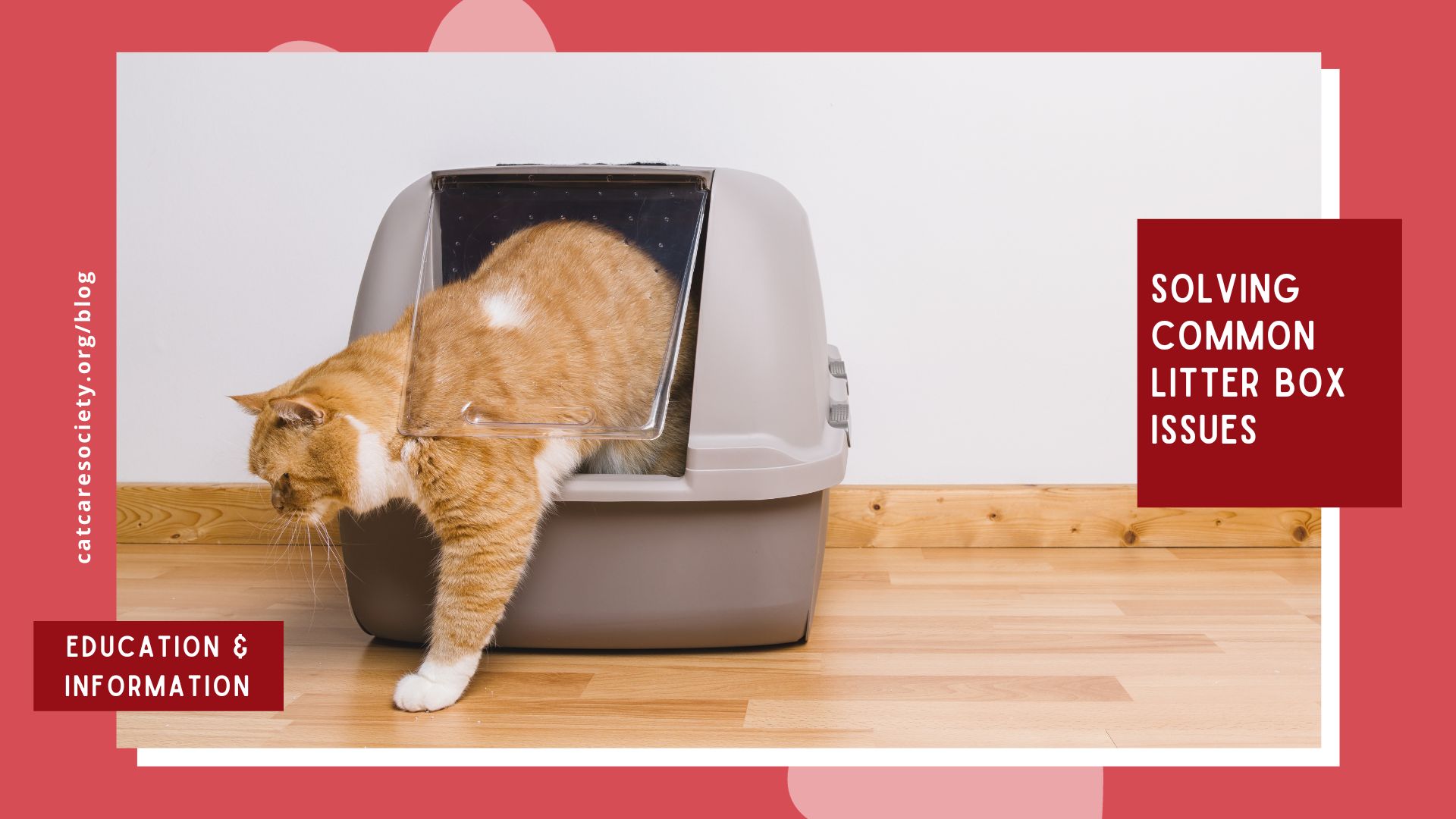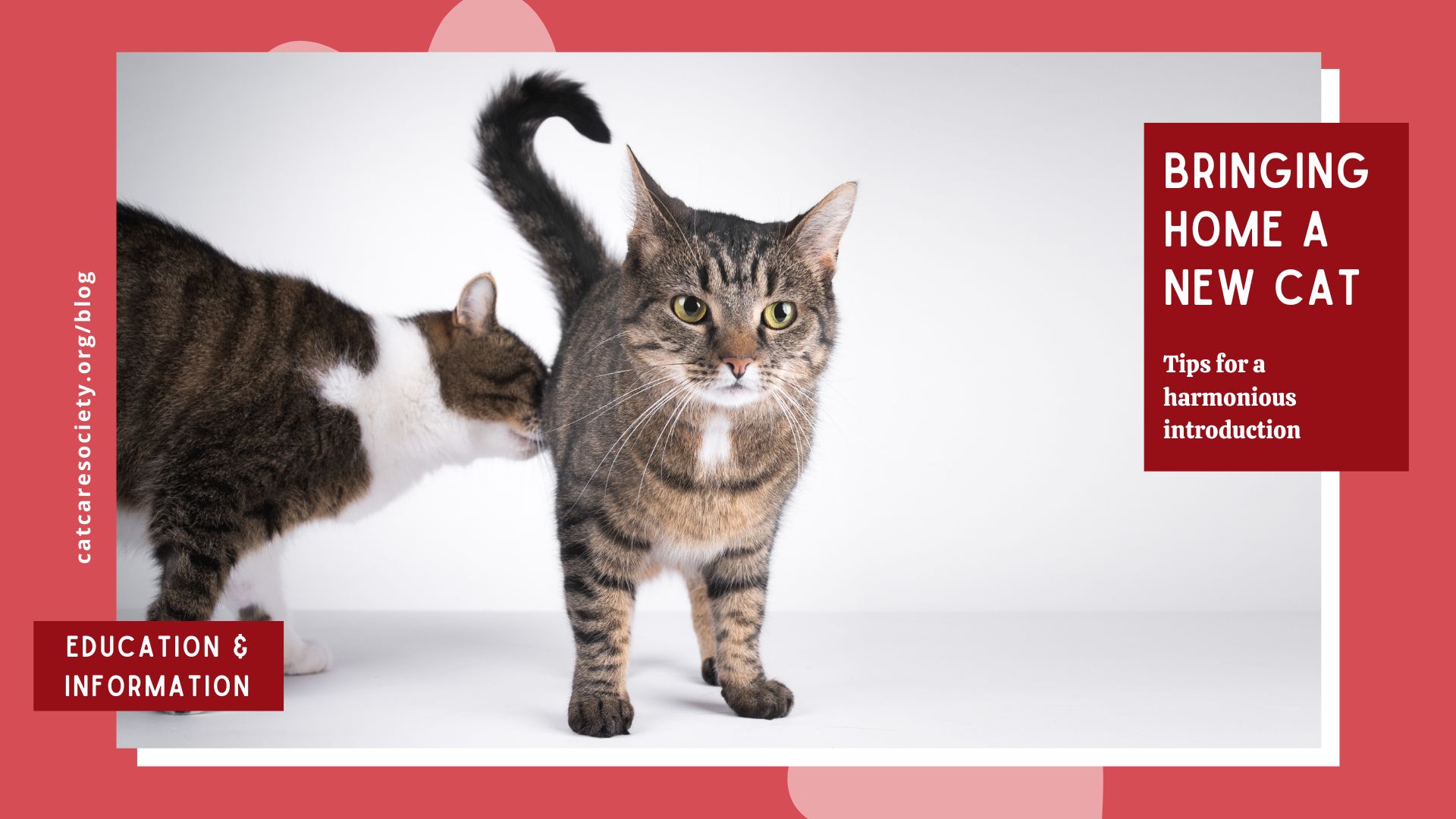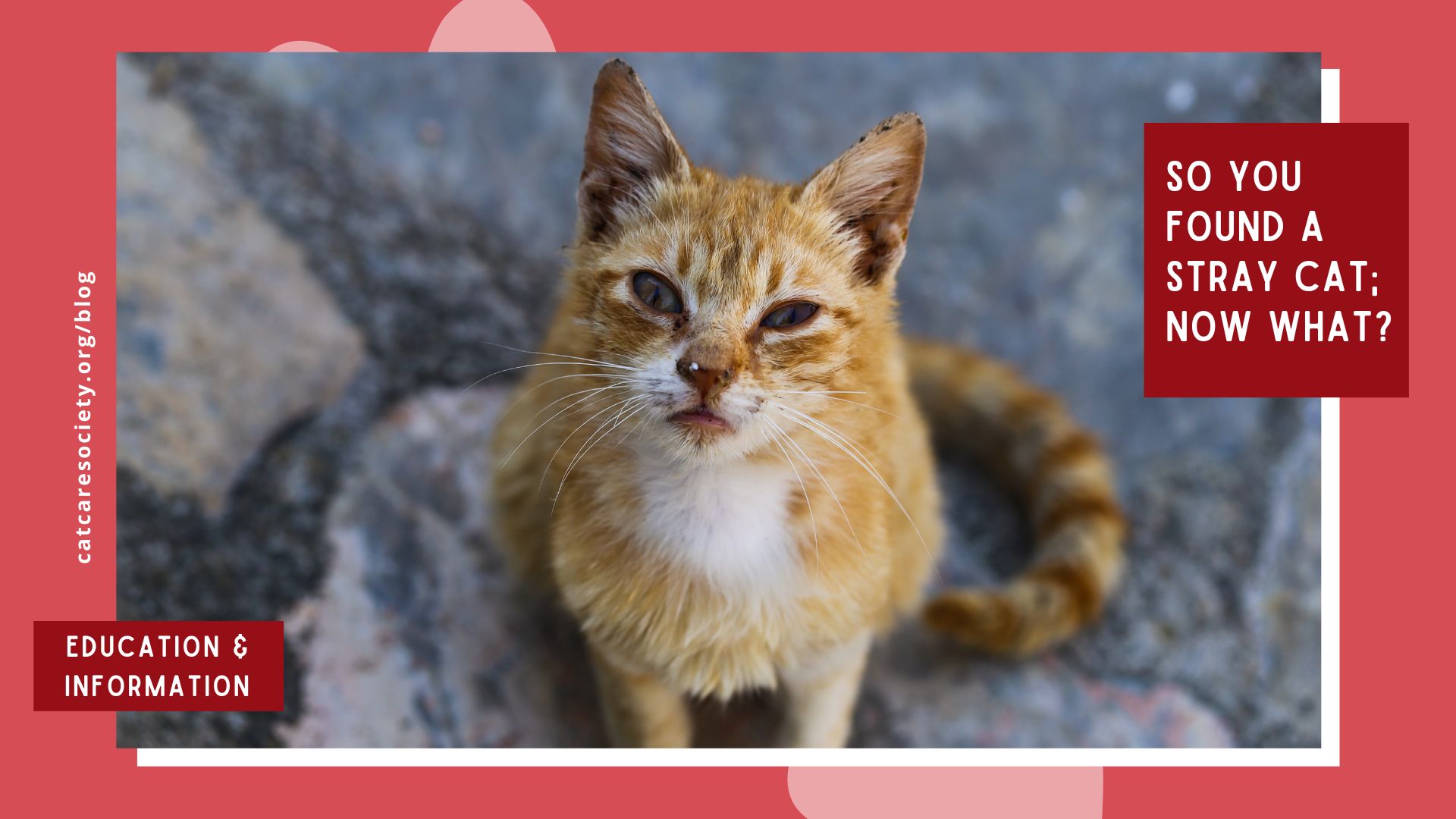Welcoming a new cat into your home is an exciting and happy time, but it’s also normal for the cat to have an adjustment period as they get used to their new surroundings. One aspect that can significantly impact a cat’s well-being is their relationship with the litter box. Fortunately, there are many simple steps cat owners can take to set their cat up for success.
Cat Care Society talked with Ursa Acree, a certified dog behavior consultant, certified professional dog trainer, and Fear Free Certified Trainer for Behavior Vets Colorado. We explore the best practices every cat owner should follow to create an environment where their favorite felines feel comfortable using the litter box. From choosing the right location and litter type to understanding the unique needs of a multi-cat household, we’ll even discuss what it can mean if a cat that previously used the litter box suddenly stops.
What best practices should cat owners follow to help their new cat feel comfortable using a litter box in their new home?
To help your new cat feel comfortable using a litter box in their new home, it’s important to follow some best practices:
- Choose the right location for the litter box, ideally a quiet, low-traffic area that offers privacy. Ensure accessibility from multiple sides to prevent your cat from feeling trapped.
- Select an appropriate litter type. Many cats prefer unscented, clumping litter, but experimentation may be needed to find what your cat likes. Keep the litter clean by scooping waste daily and changing it regularly.
- We highly recommend an uncovered large box with unscented clumping clay litter. The litter box should be scooped daily and changed out completely once a week.
- Use a correctly sized litter box (your cat should be able to fit their whole body inside and turn comfortably) and consider your cat’s preference for open or covered boxes.
- Ensure you have enough litter boxes for multiple cats; a good rule of thumb is one box per cat, plus one extra (for example, if you have two cats, you should have three litter boxes available).
- Offer praise and rewards for correct usage and avoid punishment or scolding, as it can cause litter box aversion.
- Maintain consistency in routine and location. Consult a veterinarian if you suspect a health problem related to litter box issues.
- Every cat is unique, so be patient and adaptable in finding the best setup for your cat!
What are some reasons a recently adopted cat might refuse to use their litter box? What can an owner can do to help investigate and resolve the issue?
Litter box refusal in a recently adopted cat can result from a variety of factors. Adoption, while ultimately positive, can be a very stressful and volatile period for a cat, which can lead to challenges with consistent litter box use. Some cats can take weeks or even months to settle into their new home and routine. The best thing to do is be proactive with the above tips and introduce your new cat to your household gradually. Provide them with a “safe zone” like a spare room or part of the house where the litter box is easily accessible and in a low-traffic area. As they become proficient in using the litter box, you can gradually expand their access to other parts of the house.
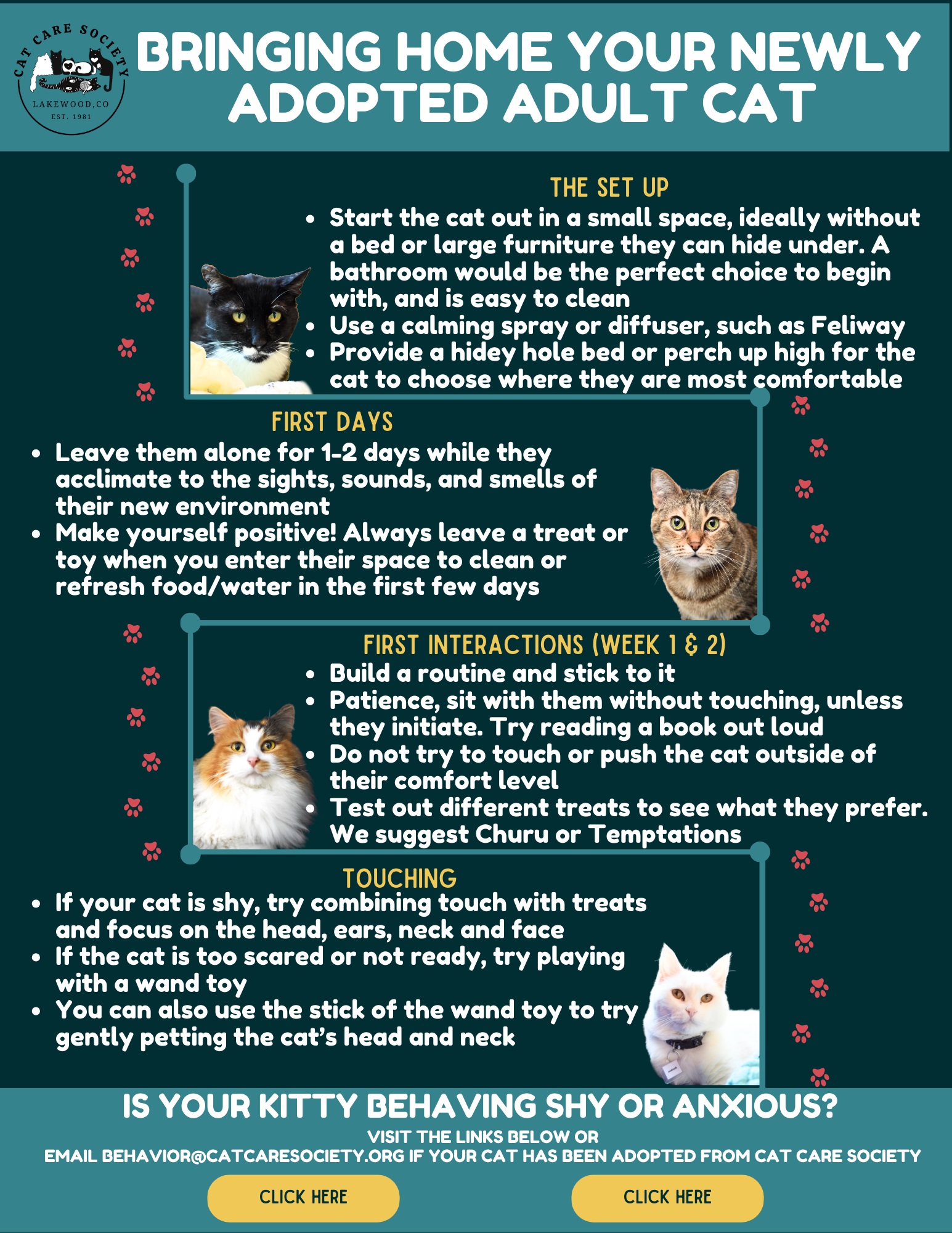
While you don’t want to make too many changes too quickly, if you find your new cat is having trouble using the litter box regularly, changing the style of the litter or the box, or the location of the box can help determine if there’s an external factor discouraging your cat. Also, remember that many cats coming from a shelter or rescue are used to a very small space, so if you have a large house, many rooms or multiple floors, it may help to limit your cat’s access, or provide litter boxes on each floor or in several locations.
If changes in the litter box type, location or number don’t help, a more complex behavioral or medical issue may be at play. Consulting a professional cat behavior specialist, a veterinary behaviorist or a vet can provide guidance in addressing the problem. Overall, patience, consistency and positive reinforcement are essential in helping a newly adopted cat adapt to their new environment and litter box.
If a cat owner suspects a medical issue, in addition to contacting their veterinarian, what other symptoms should they look out for?
We always recommend ruling out medical reasons first for a cat’s issues using the litter box appropriately before pursuing behavioral help.
Some symptoms that indicate a medical concern include, but are not limited to:
- Straining to urinate
- Urinating small amounts
- Frequent and/or prolonged attempts to urinate
- Crying out while urinating
- Excessive licking of the genital area
- Urinating outside the litter box
- Blood in the urine
Other symptoms of a health issue could be straining to defecate, bloody stool, diarrhea, vomiting, lethargy, hiding, change in appetite, and any other signs that concern you or seem “off!” Cats are known for hiding pain and discomfort, so you should see your veterinarian right away if you notice worrisome symptoms.
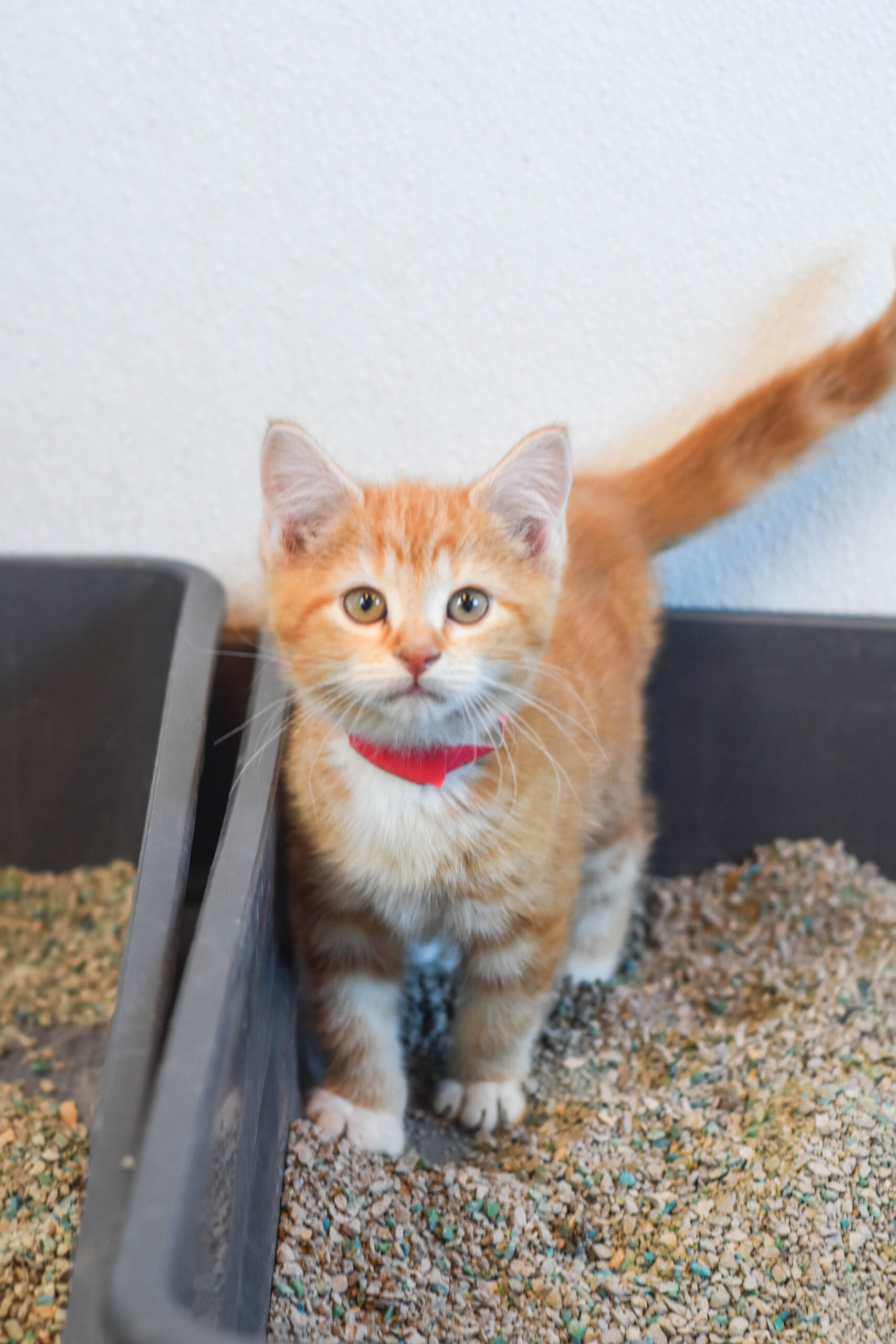
What kind of advice would you offer regarding litter box management for a multi-cat household to prevent cat stress and soiling outside of the litter box?
In a multi-cat household, effective litter box management is crucial to prevent cat stress and soiling outside of the box. First and foremost, ensure there are enough litter boxes, typically, one for each cat, plus one extra. These boxes should be placed in separate, quiet and easily accessible areas to provide privacy and reduce competition. Another helpful strategy to reduce stress is to establish separate feeding and resting areas so that your cats are not forced to interact in areas that may be sensitive.
Environmental enrichment through toys and play can also help reduce stress in a multi-cat household. Set aside a bit of time each day to play with and give attention to each cat separately. This allows you to meet each individual’s specific enrichment and social needs, which will support them in feeling less stressed and lower the likelihood of conflict with the other cats. With patience and consistent implementation of these strategies, you can create a harmonious environment for your multi-cat household.
What behavioral and medical reasons can lead a cat to suddenly stop using a litter box?
The primary behavioral reasons a cat might stop using a litter box are due to stress, which could be caused by a sudden change in the household, routine or environment. One of the first things we always look at is whether there have been any changes in the cat’s life. Even things as seemingly innocent as a new piece of furniture or a change in scented laundry detergent can cause sensitive cats to feel disrupted!
Sometimes, a cat just needs to be supported through the change with additional management around the litter box, e.g., going back to the “safe zone” setup where they have limited access to the whole house, increased supervision, and possibly additional litter boxes. Sometimes though, the cat really struggles with the change and may need behavioral intervention if they are not improving over time.
You can also purchase litter attract and mix it in with the cat’s preferred litter, or try adding a Feliway diffuser or spray to the area where the litterbox is located.
There are many physical and medical conditions that can affect a cat’s use of their litter box. For this reason, we always encourage cat guardians to see their veterinarian anytime there is a sudden change in litter box habits, or if a new cat is struggling to develop a litter box routine. Ruling out or treating a medical complication allows us to focus on an appropriate behavioral intervention to help the cat establish good habits.
If a cat owner suspects a behavioral issue, what action should they take to address the behavior?
After addressing the above tips, if it is suspected that a more complex behavior issue might be at play, contacting a cat behavior specialist would be a great next step. Certified Cat Behavior Consultants, found through the International Association of Animal Behavior Consultants, are trainers who have specialized education and experience in dealing with cats. Most of them are available for online consultation from anywhere in the world. The online format is especially great for working with cats who are often sensitive to new people coming into their home. Not always the most affordable options if you’re budget-strapped, but if you have the means, a CCBC will work with you to gather information, troubleshoot the cause of the litter box issue, and implement an appropriate treatment plan to help get your cat back on track.
A good treatment plan will look at the whole picture of the cat’s health, environment, daily routine, etc. To determine what can be adjusted externally before embarking on approaches that involve the cat. This will set them up to be more successful in any training or enrichment strategies that are implemented. Often, we see a lot of improvement with a combination of some environmental changes and an individually developed training and enrichment plan.
Get more tips from Jackson Galaxy in this video:
How can cat owners distinguish between cat spraying and urination? What does spraying indicate in cats and what strategies can cat owners use to reduce it?
Distinguishing between cat spraying and urination is important as it helps in understanding your cat’s behavior and subsequently addressing any issues. Here’s how cat owners can differentiate between the two:
Cat Spraying:
- Vertical surfaces: Cats typically spray on vertical surfaces, such as walls, furniture or door frames. This behavior can be a way of marking territory.
- Small amount of urine: Spraying involves a smaller amount of urine compared to regular urination. It’s often just a few drops or a fine mist.
- Positioning: Cats often stand upright with their tail quivering when they spray. Their back is usually toward the marked area.
- Behavioral context: Spraying is often linked to territorial marking, anxiety or reacting to changes in the environment.
- Scent marking: Cats use spraying to mark their territory with scent, indicating their presence to other cats.
Cat Urination:
- Horizontal surfaces: Cats urinate on horizontal surfaces, like the floor or the litter box.
- Larger volume of urine: Urination involves a larger volume of urine, usually forming a puddle.
- Squatting position: When cats urinate, they squat low to the ground with their back legs positioned more traditionally, similar to when they defecate.
- Typical elimination behavior: Urination is a regular part of a cat’s elimination behavior and is not related to marking territory.
- Litter box use: Healthy cats should typically urinate in their litter box.
Spraying serves various purposes in cat communication. Firstly, it’s a way for cats to mark their territory, a fundamental instinct in feline behavior. By spraying, they signal to other cats that a particular area is already claimed. Spraying can also serve as a form of social signaling among cats, helping establish social dynamics within a group of felines. Additionally, cats may spray in response to stress or anxiety, often triggered by changes in their environment or routines. For cats who are not spayed or neutered, spraying can signal their readiness for mating. Finally, medical issues can also lead to spraying.
Understanding the underlying reason for your cat’s spraying behavior is essential for addressing it effectively and providing the appropriate solutions. If you’re concerned about your cat’s spraying or urination, consulting with a veterinarian can help identify the cause and determine appropriate next steps.
Want more cat content in your inbox?
Cute cat pics, advice and CCS events and updates await in our weekly(ish) Mewsletter.
What have you found to be the most effective method for cleaning up cat urination and spraying?
Effectively cleaning up cat urine is essential to prevent lingering odors and discourage repeated incidents. Start by acting promptly; the sooner you address the stain, the better!
Instead of rubbing, blot the area with paper towels or a cloth to absorb as much urine as possible. Enzymatic cleaners work best for eliminating cat urine odor, as they break down uric acid. After using the cleaner, rinse the area with water and blot it dry.
To further neutralize odors, you can sprinkle baking soda or use a mixture of equal parts white vinegar and water. If the urine has penetrated into carpets or upholstery, consider steam cleaning with an enzymatic cleaner, and be sure to wash any bedding or fabrics affected by urine. Finally, block your cat’s access to any soiled areas that are a repeated problem, and identify the cause of the inappropriate urination to prevent future incidents.
Final Thoughts
We are so appreciative of Ursa sharing her time and expertise! Most of the time, resolving litter box issues can be as simple as moving the box to a more private location, adding a box, switching up litter or just giving the cat time to adjust to new surroundings. Check out other blog posts for additional information and attend our free monthly seminars that cover all kinds of cat-related topics. However, if these solutions aren’t working, or for more information on conquering litter box issues in your home, check out our Resources page, which contains links to local certified behaviorists and expert articles. Additionally, if the cat’s behavior has recently changed, it may be a sign to schedule a visit with the cat’s veterinarian.
More About Ursa: Ursa Acree is a Certified Dog Behavior Consultant, Certified Professional Dog Trainer, and Fear Free Certified Trainer. She is the director of behavior services for Behavior Vets. Ursa founded Canis Major Training in 2016, which operated as the premier training, board and train, and daycare facility of Denver through 2021. In addition to her experience working with private clients, Ursa has extensive experience working with cats and dogs in need. She was the behavior manager for the Kentucky Humane Society from 2007 to 2010 and the behavior manager at the Dumb Friends League from 2010 to 2013, where she worked with clients to prevent relinquishments due to behavior issues, implemented changes to reduce stress and improve animal adoptability, and trained shelter staff and volunteers in enrichment, body language, humane handling, husbandry and training. From 2013 to 2015, she conducted behavior and nutrition research with Hill’s Pet Nutrition. As a behavior technician, she was responsible for animal husbandry and handling in addition to training animals to participate in preference assessments of new foods. Ursa co-hosted the Canine Conversations podcast from 2018-2021 and has been featured in the Mile High Dog Magazine, Dumb Friend’s League “Pet Tales” and Kentucky Humane Society’s “Paw Street Journal.” When not immersed in animal behavior, she spends every possible moment hiking, kayaking, biking, storm chasing, and camping with her husband Andy, son Fox, and dog Lenore.
More on Behavior Vets: The Behavior Vets team is led by our board-certified veterinary behaviorist, and rounded out by veterinary behavior residents, veterinarians with a special interest in behavior, and the best behavior consultants and animal trainers to be found. There are less than 150 veterinary behaviorists world-wide. It takes an average of 12 years of schooling to become a veterinary behaviorist — a veterinary doctor specially trained to work with behavior problems. Veterinary behaviorists can legally diagnose behavior issues, assess and treat the medical components of behavior problems, and prescribe diets, supplements and medications when needed to support behavior modification and training.
About the Author: Beth Dokolasa is a volunteer for Cat Care Society and served on the organization’s junior board. She is an instructional developer for Natural Grocers and lives in Indian Hills, Colo., with her husband, young daughter, and two cats, Techno and Digit.

